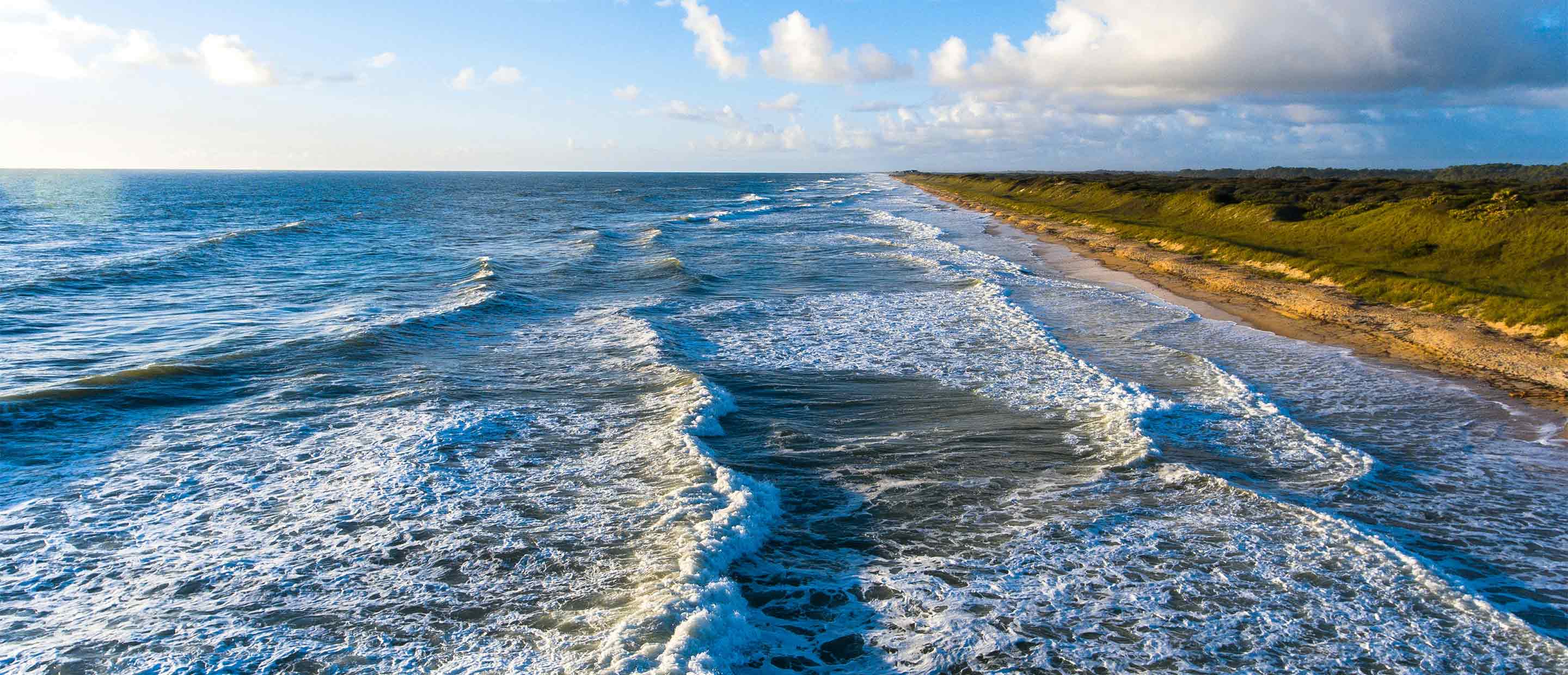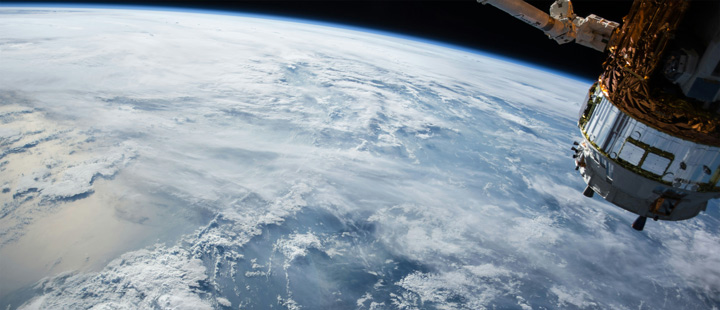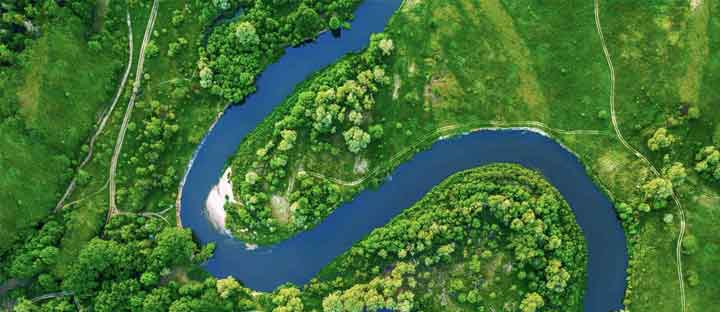With multifaceted threats to life on Earth, nature-based solutions are attracting scientists, governments, communities and businesses – by delivering multifaceted results, Dr Claire Asher explains in LUX magazine.
The climate crisis is here. No longer a theoretical future threat, the effects of climate change are being felt acutely around the world. As promises of grand technological solutions to halt the climate emergency without reductions in emissions fail to materialise, scientists are sounding the alarm – the only way to address the environmental crisis that humanity faces is to work with nature, rather than around it or against it.
“There is an assumption that with enough money and enough economic growth, it’s all going to be okay,” says Nathalie Seddon, Professor of Biodiversity and Director of the interdisciplinary Nature based Solutions Initiative at the University of Oxford. “People assume that we will clever our way out of it, that technology will come to the rescue… but that’s not true.”
Why mitigating future economic harm means working with nature today
Working with nature means developing interventions that protect and restore ecosystems to ensure the services they provide — from absorbing atmospheric carbon to providing clean drinking water — are maintained or enhanced in order to tackle the multifaceted challenges of climate change, food and water security, biodiversity loss and extreme weather, while also benefitting human wellbeing. Nature-based solutions include a diverse range of ecosystem-focused approaches, such as forest-landscape restoration, regenerative agriculture, wetland restoration and green infrastructure. They will be essential in the coming decades for governments to mitigate the economic harm caused by climate change, and for corporations to assure their assets and build resilience in their supply chains.
“No business will be able to operate if the trends for ecosystem loss and degradation continue as they are,” explains ecologist Jane Madgwick, CEO of Wetlands International. This is because corporations rely upon the very ecosystem services that are under threat. “For example, virtually all businesses depend on a reliable water supply,” she says. Securing the vital services provided by natural ecosystems by protecting and restoring them will therefore be fundamental for corporations to remain operational as the climate continues to change.
The role of the private sector in closing the financing gap
The private sector can also turn to nature-based solutions to address concerns over corporate responsibility and to ensure their continued licence to operate. “There is a growing expectation from shareholders, from companies’ own staff, from society, of better environmental performance,” says Madgwick. “I think there is an incentive to get ahead of that curve and look at what it really means to act in a sustainable, responsible way – otherwise they might get pushed out of the market,” she warns. “Part of that, of course, is cleaning up your act within the bounds of your own company and premises, but I think the expectation is also that companies contribute to the wider environment.”
Restoring nature and managing it better has the potential to provide more than one-third of cost-effective emissions reductions needed to keep global warming below 2°C by 2030, yet nature-based solutions currently receive just eight per cent of global climate funding. “That financing gap is very significant and we think the private sector needs to be encouraged to step in,” says Madgwick.
The services provided by ecosystems — from carbon sequestration to flood mitigation to pollination — are valued at over $125 trillion per year. This figure dwarfs the $1.8 trillion in annual global spending that is driving climate change and biodiversity loss. However, nature-based solutions are a cost-effective way to address these dual crises. For example, just $15 billion could restore mangrove forests, 50 per cent of which have been lost in recent decades, and doing so could provide huge benefits for both local communities and the global climate.
Unfortunately, time is not on our side. “The urgency, the speed of investment needed to make a difference to tackle climate change is such that we need blended finance, public and private sector. Companies have to come to the table,” says Madgwick.
A nature-based solution in practice
One example of how blended financing can expedite nature-based solutions – strengthening ecosystems and supporting local communities – is the Turneffe Atoll Marine Reserve in Belize. Led by local NGO the Turneffe Atoll Sustainability Association (TASA), the project combines public- and private-sector funding with catalytic grant funding from the Blue Natural Capital Financing Facility of the International Union for the Conservation of Nature (IUCN). The project aim is to sustainably manage 132,000ha of coral-reef ecosystems, while safeguarding the livelihoods of 750 local fishermen and providing additional income to the local community through visitor fees. Healthy coral reefs can take large amounts of carbon from the atmosphere, as well as supporting vibrant and diverse ecological communities that improve the resilience of the whole ocean ecosystem.
As this example illustrates, in addition to mitigating the worst effects of climate change, nature-based solutions can provide an almost limitless list of benefits, including protecting against coastal erosion, preventing wildfires, maintaining and restoring sources of clean water and ensuring food security. However, such solutions do require a change in mindset. We need to stop seeing humans as separate from nature and instead understand that we are a key part of natural, healthy ecosystems. “Nature-based solutions have this double KPI,” says Stewart Maginnis, Global Director of the Nature-based Solutions Group at the IUCN. “They have to reinforce the ecosystem and they need to have real tangible benefits for society.”
Designed correctly, nature-based solutions can also complement engineering solutions, by “enhancing the resilience of other existing interventions,” says Maginnis. For example, a sustainable flood-management scheme in Medmerry on the south coast of England, led by the UK Environment Agency, has created a 250ha nature reserve of mudflats, salt marshes and grasslands. In combination with a new flood embankment, the reserve will buffer residents and businesses in nearby Selsey from inundation by sea water, while also providing vital habitat for wildlife, and, in addition, is already proving a tourist attraction.
The importance of scaling up nature-based solutions
There are numerous such examples of small- and medium-scale implementations of nature-based solutions around the world that show the promise of these approaches to tackle a multitude of environmental issues simultaneously. However, scaling up these interventions to achieve the global change that is needed will be challenging. For example, Maginnis explains that “because you’re working with ecosystems, they cut across different land uses and therefore different policy contexts,” highlighting the need for landscape-scale solutions that bring together regional, national and international stakeholders. “If we’re going to see nature-based solutions really reach their potential, they have to be something that we see the private sector embrace, governments embrace, NGOs embrace, and, of course, communities,” Madgwick emphasises. “We need alliances at all layers. Crucially, we also need those who live and work in the landscape to own and lead the solutions. And the real value of nature-based solutions will be when they can go to scale.”
As financing for nature-based solutions becomes more available, a further challenge will be ensuring that the money is invested wisely. “Bringing an enormous investment to the landscape is not simple,” Madgwick acknowledges. “What is really needed is seed finance to prepare for the creation of sound landscape propositions that will support nature recovery in a sustainable and inclusive way. Ultimately, we need to invest millions to spend billions wisely.”
A further issue is that there is often confusion over what is, and what isn’t a nature-based solution. For example, planting trees without consideration for the wider context of the ecosystem and the communities that rely upon it is not considered a nature-based solution and is unlikely to yield the intended benefits. In 2020, the IUCN developed a global standard that outlines key criteria to guide the development of effective and equitable nature-based solutions, and one key criterion is prior informed consent from local communities. “If something is trampling over the rights of local communities, it’s not a nature-based solution,” Maginnis clarifies.
Offering long-term solutions, not instant results
An added complexity is that nature-based solutions are not an instant fix for the climate and environmental crisis; ecosystems can take time to recover and so there is often a lag between implementation and the restoration of ecosystem-service benefits. However, especially in highly degraded habitats, the initial benefits can manifest relatively quickly. For example, in Java, coastal erosion due to the degradation of mangrove forests threatens the lives and livelihoods of millions of people. The Building with Nature Indonesia project worked with local communities, government ministries and an international consortium to restore a 20km stretch of eroded mangrove coast in Demak, protecting the homes of 70,000 local people from being lost to the ocean.
The initiative, which involved constructing permeable dams to restore natural coastal sediment balance and allow mangroves to regenerate naturally, is now being applied to 13 other districts across Indonesia. Such projects show that, “while the full potential benefits of nature-based solutions can take decades to mature, the evidence is that in three to five years you can make massive change,” says Madgwick.
Although restoring healthy ecosystems takes time and money, there is huge potential for nature-based solutions to deliver local and global-scale benefits for climate and the environment, says Maginnis. “Many coastal and marine ecosystems are so carbon-rich, even if you’re doing a mangrove project to protect a community, or to enhance local livelihoods through getting better fisheries, you are sequestering large amounts of carbon as well.”
Despite the complex challenges, nature-based solutions are the most powerful tool at our disposal to mitigate greenhouse-gas emissions, promote biodiversity and secure a safe, liveable planet for future generations.
Five nature-based solutions that work for wetlands
1. Ecological mangrove restoration stabilises coastal ecosystems and sequesters carbon.
2. Raising peatland water levels keeps carbon in the soil.
3. Restoring floodplains and preventing river fragmentation reduces flooding.
4. Regenerating hillsides and enabling water infiltration protects and restores water sources.
5. Creating sponge cities: making wetlands central in city planning reduces flooding and heating.
Why nature-based solutions must support biodiversity
Nature-based solutions are gaining attention as a means to offset greenhouse-gas emissions and mitigate climate change, but these benefits will only be realised if they are also designed with biodiversity in mind. “Climate change and biodiversity loss are two sides of the same coin and we can’t address one without the other,” says Nathalie Seddon, Professor of Biodiversity and Director of the interdisciplinary Nature-based Solutions Initiative at the University of Oxford.
Diverse natural ecosystems are stronger and more resilient, and can secure their ecosystem services into the future. “If you overlook biodiversity, you won’t even get carbon sequestration, because the ecosystems you are investing in won’t be resilient in a warming world,” says Seddon. “It’s like having a diverse investment portfolio; the more types of investments you have, the more likely it is to be able to weather the storm – in that case, a financial storm. In a natural world, the more species you have, the more likely it is that the ecosystem can deal with whatever is coming.”
How nature-based solutions can help secure a liveable planet
As well as climate change and biodiversity loss, scientists have identified seven other ways in which humanity is pushing up against the natural limits, or planetary boundaries, of Earth. We overshoot these boundaries at our peril – the longer we remain in the danger zone, the greater the risk that the Earth system will pass a tipping point that pushes the planet into a new climate reality. Nature-based solutions are the best remedy for these, as they can reduce pressure on multiple planetary boundaries at once. “Putting nature at centre stage – understanding nature’s capital and appreciating the ecosystem’s services that nature can deliver – will help us to stay within planetary boundaries,” says Markus Müller, Environmental, Social and Governance (ESG) Chief Investment Officer at Deutsche Bank’s Private Bank. Restoring ecosystems has the potential to sequester up to 18 gigatonnes of CO2 emissions each year, but emissions reductions are also needed to keep the climate within 2°C of pre-industrial levels. “We need to reduce CO2 emissions while using nature-based solutions to absorb CO2 as a mitigation strategy,” says Müller.
Main image: Blue Peak, 22 June 2013, South Coast, New South Wales, Australia. © Ray Collins
This article first appeared in the Autumn/Winter 2022 issue of LUX magazine. This issue features the fourth in a series of Deutsche Bank Wealth Management/LUX supplements about our ocean and its importance to both the environmental and economic wellbeing of the planet.









